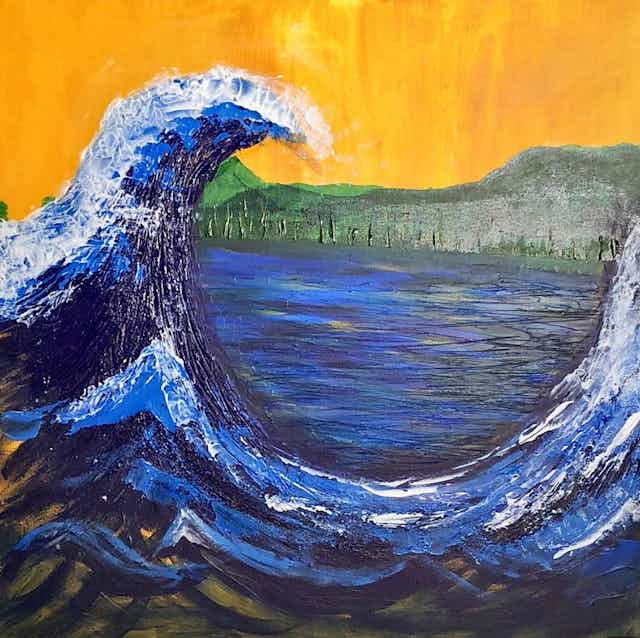Exploring the Diverse World of Artistic Expression: From Surrealism to Abstract Realism
In the world of artistic expression, from the dreamlike landscapes of surrealism to the detailed play of light and kind in abstract realistic look, artists have constantly pressed the boundaries of creativity and creative imagination. As we check out the multifaceted globe of art, we are offered with a tapestry of designs, methods, and approaches that test our understanding and provoke reflection.
Surrealism: Unleashing the Subconscious
Surrealism, a progressive imaginative motion of the 20th century, delved right into the depths of the subconscious, revealing a world of dream-like images and unusual associations. Headed by artists like Salvador Dali, René Magritte, and Joan Miró, Surrealism looked for to challenge the conventional ways of seeing and understanding art. Through strategies such as automatism and dream analysis, Surrealist artists aimed to use the unconscious mind to expose hidden facts and wishes.
Among the vital elements of Surrealism was the emphasis on the irrational and the incredible. By combining unanticipated aspects in their jobs, Surrealist musicians aimed to create a sense of disorientation and surprise in the visitor. This disruption of logic and factor was implied to prompt a much deeper exploration of the subconscious and the secrets of the human mind.
Abstract Realism: Redefining Perception
Testing typical creative borders, Abstract Realistic look redefines understanding with the blend of well-known elements with abstract kinds. This ingenious method to art integrates the representational accuracy of realistic look with the imaginative liberty of abstraction, supplying viewers a distinct visual experience that prompts them to examine their perception of reality.
In Abstract Realistic look, artists strive to record the essence of their subjects while also infusing their work with a feeling of deepness and complexity with abstract elements. By mixing the acquainted with the unknown, these artists welcome target markets to involve with their pieces on several levels, motivating them to explore the subtleties of form, color, and appearance.

Cubism: Fragmentizing Reality
Using geometric kinds and fragmented point of views, Cubism revolutionized the imaginative representation of fact in the early 20th century. Created by Pablo Picasso and Georges Braque, Cubism looked for to challenge typical concepts of viewpoint and representation. By damaging down objects and numbers into geometric shapes and offering them from multiple perspectives simultaneously, Cubist artists intended to record the significance of the subject instead of its literal appearance. This technique not only deconstructed fact yet also highlighted the monotony of the canvas, leading the way for future abstract art movements.

Cubism can be classified right into 2 major stages: Analytical Cubism, identified by monochromatic color pattern and detailed, fragmented kinds; and Artificial Cubism, which included collection aspects and brighter shades into the compositions. Through these distinct stages, Cubism affected not only paint however likewise design, style, Home Page and sculpture. trump art. Its influence resounded across the art globe, inspiring artists to discover brand-new methods of translating and representing the globe around them
Expressionism: Feelings on Canvas
Exploring the midsts of human emotions via meaningful and vivid brushstrokes, Expressionism became a profound imaginative movement in the very early 20th century. Unlike previous art motions that focused on portraying the exterior world, Expressionism explored the inner realm of the musician's mind, aiming to stimulate raw emotions and prompt natural actions from viewers.
Expressionist artists, such as Edvard Munch, Egon Schiele, and Emil Nolde, denied standard notions of charm and read realistic look for misshaping kind and color to communicate subjective sensations. The use of overstated brushwork, bold colors, and altered numbers helped produce a feeling of unease, alienation, or enthusiasm in their jobs.
Among the most popular instances of Expressionism is Munch's "The Scream," which captures the intense anxiety and despair of modern life through its swirling, distorted figure against a blood-red sky. With their emotionally billed works, Expressionist musicians looked for to challenge traditional artistic norms and give a window into the unstable midsts of the human soul.
Contemporary Art: Developing Viewpoints

Among the specifying features of modern art is its constant development and capacity to adjust to changing cultural landscapes. Artists are progressively including innovation into their method, obscuring the lines in between the electronic and physical worlds. This blend of tools permits cutting-edge ways of storytelling and engaging with audiences in a more interactive manner.
Furthermore, contemporary art usually offers as a system for social discourse, addressing pressing problems such as identification, national politics, and the environment. Artists anchor are using their work to stimulate vital discussions and prompt thought, shedding light on the intricacies of the globe we stay in. As viewpoints proceed to develop, contemporary art remains a dynamic and influential force in shaping our social landscape.
Verdict
To conclude, the world of artistic expression encompasses a variety of movements and designs, each with its very own distinct method to conveying definition and emotion. From surrealism's exploration of the subconscious to abstract realistic look's redefining of assumption, and from cubism's fragmentation of truth to expressionism's portrayal of feelings, art remains to evolve and test point of views - trump art. Contemporary art reflects the ever-changing globe we reside in, offering new means to translate and understand the intricacies of our truth
As we explore the diverse world of art, we are offered with a tapestry of styles, strategies, and approaches that challenge our understanding and provoke reflection. Its impact resounded across the art globe, inspiring musicians to explore brand-new methods of standing for the world and interpreting around them.
